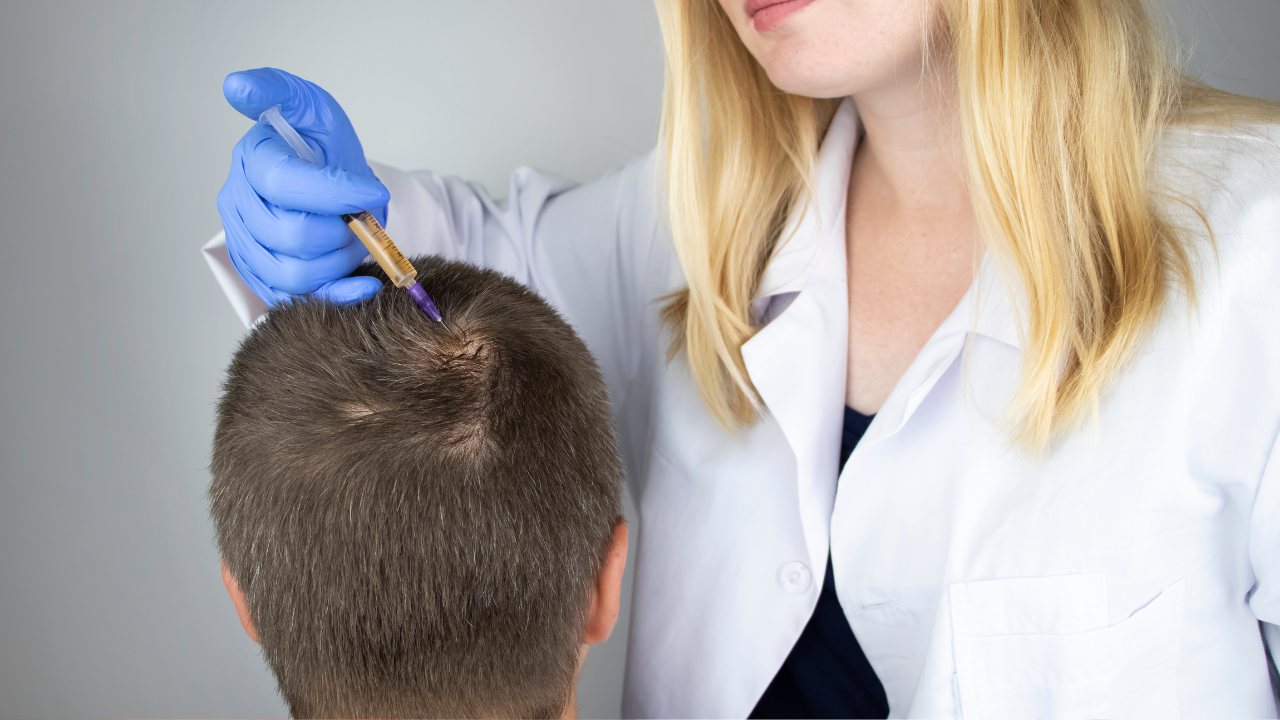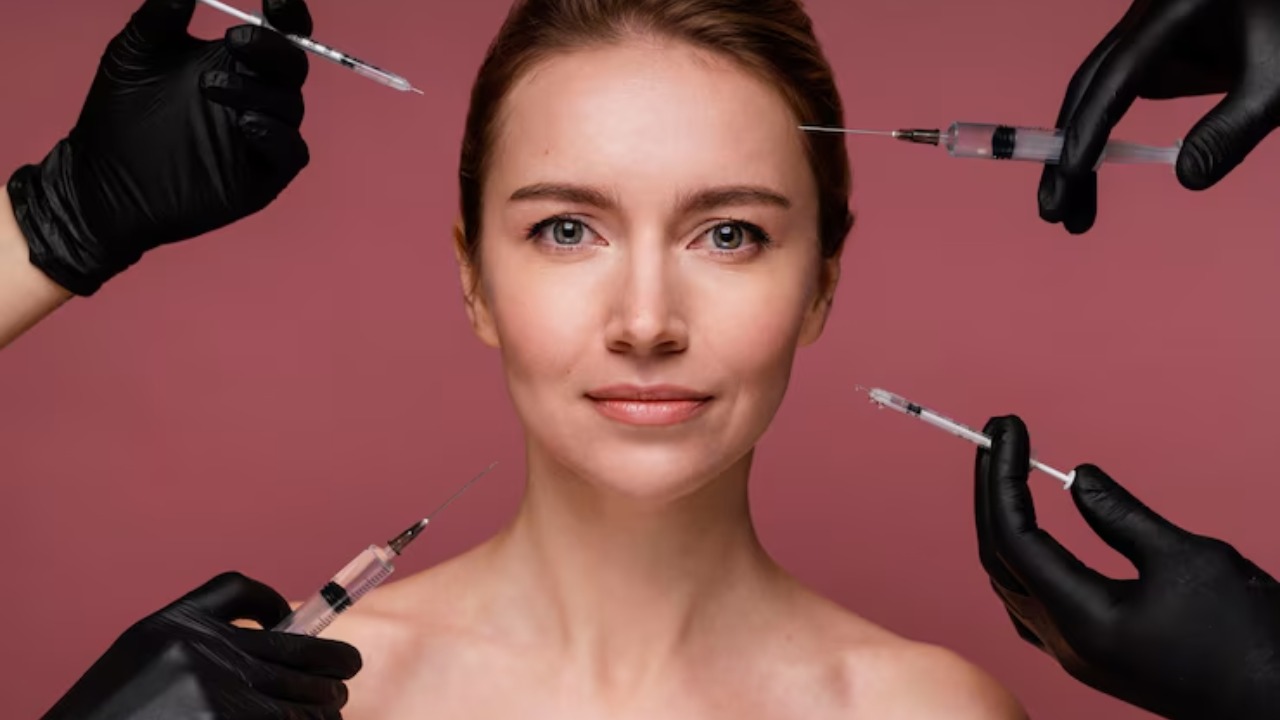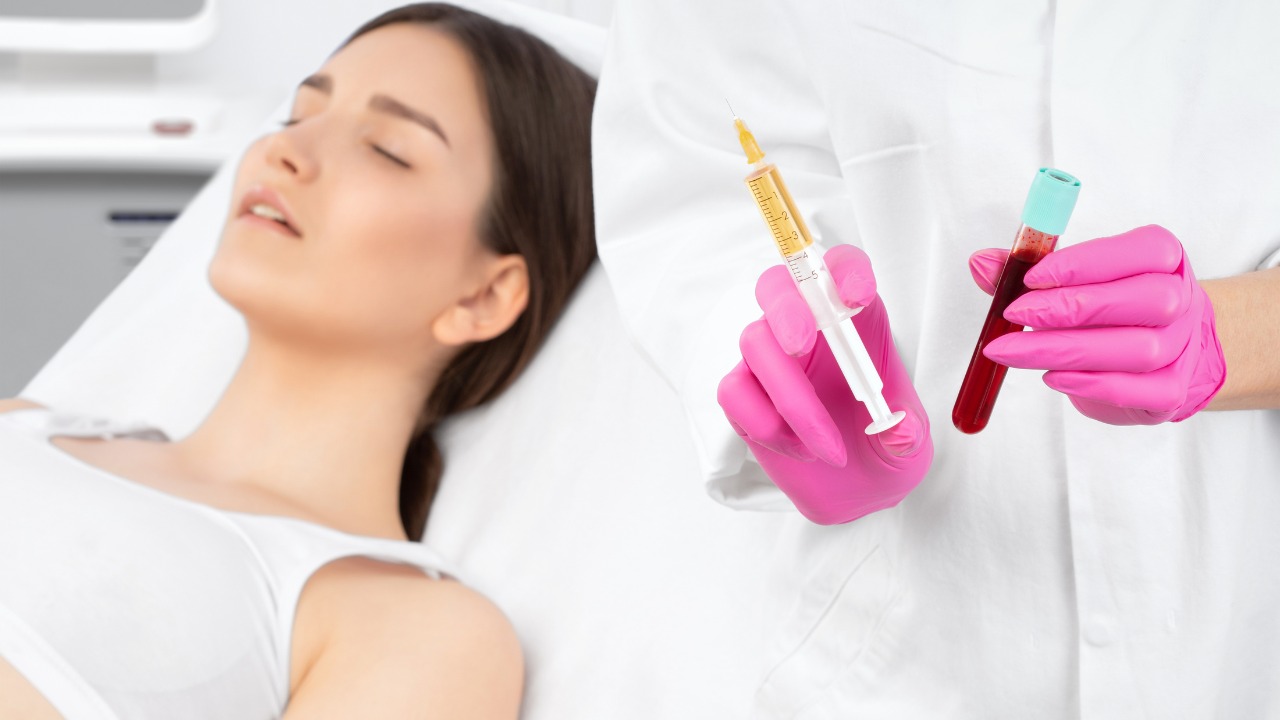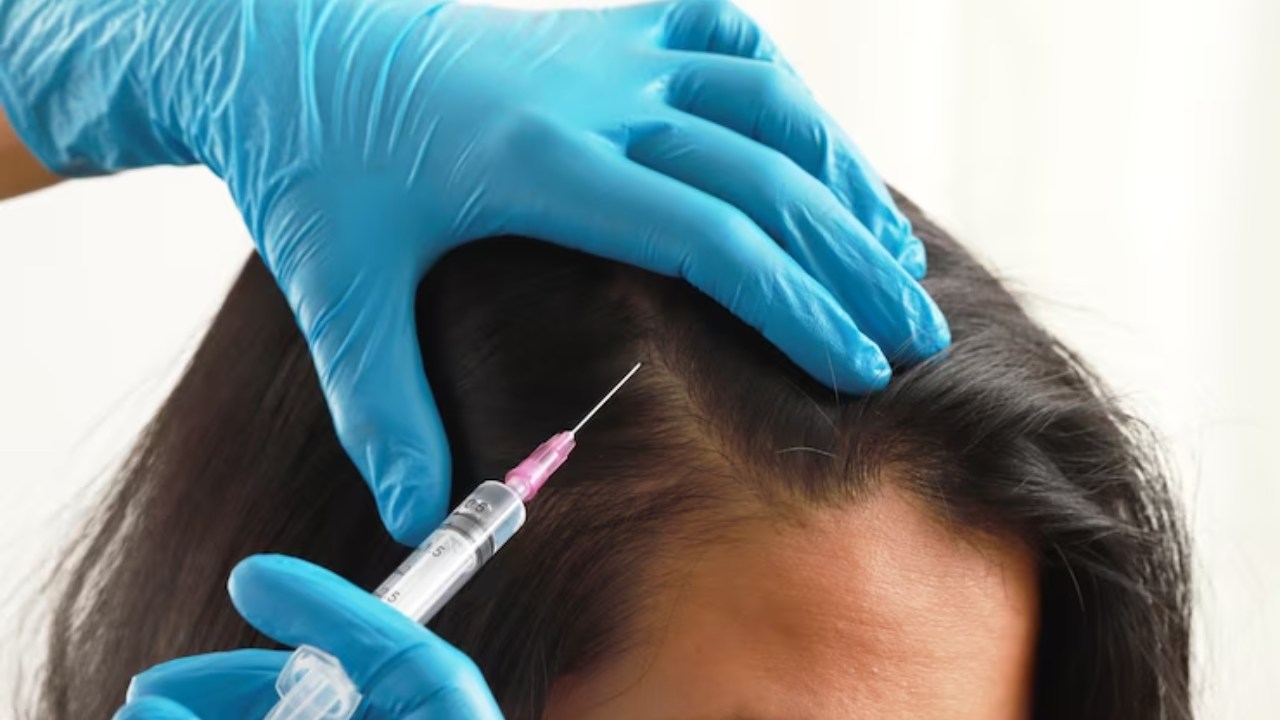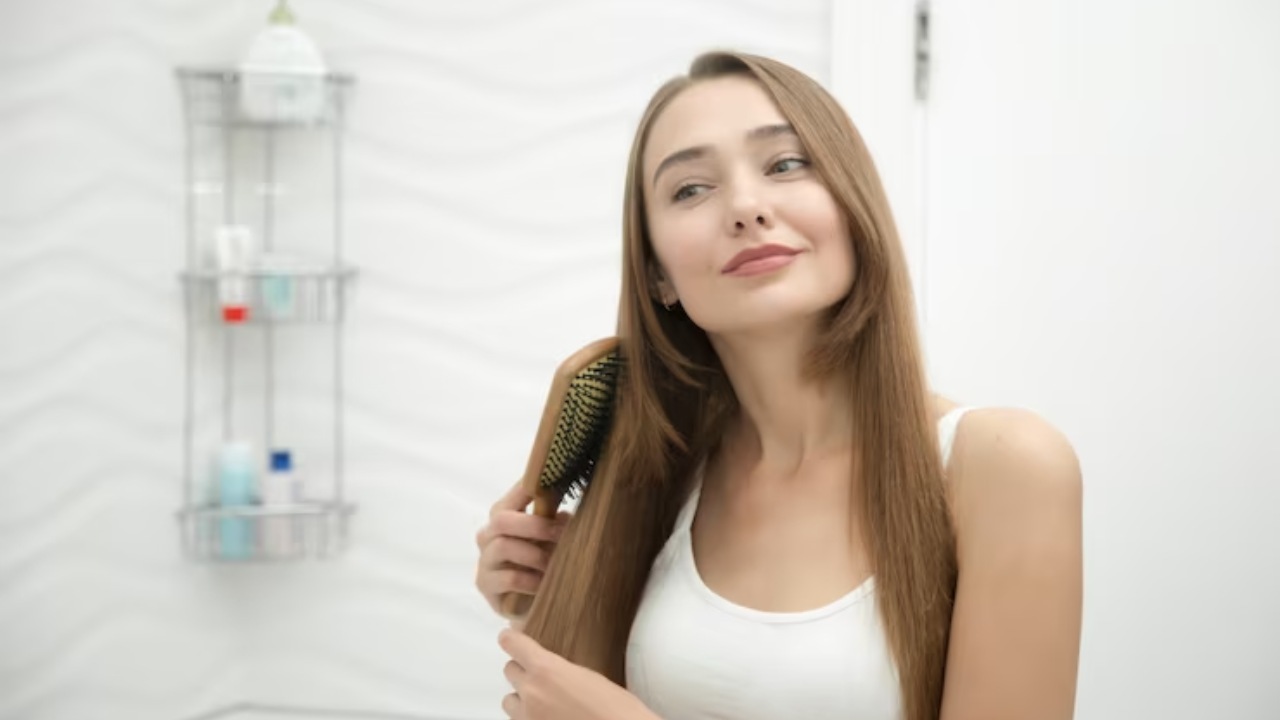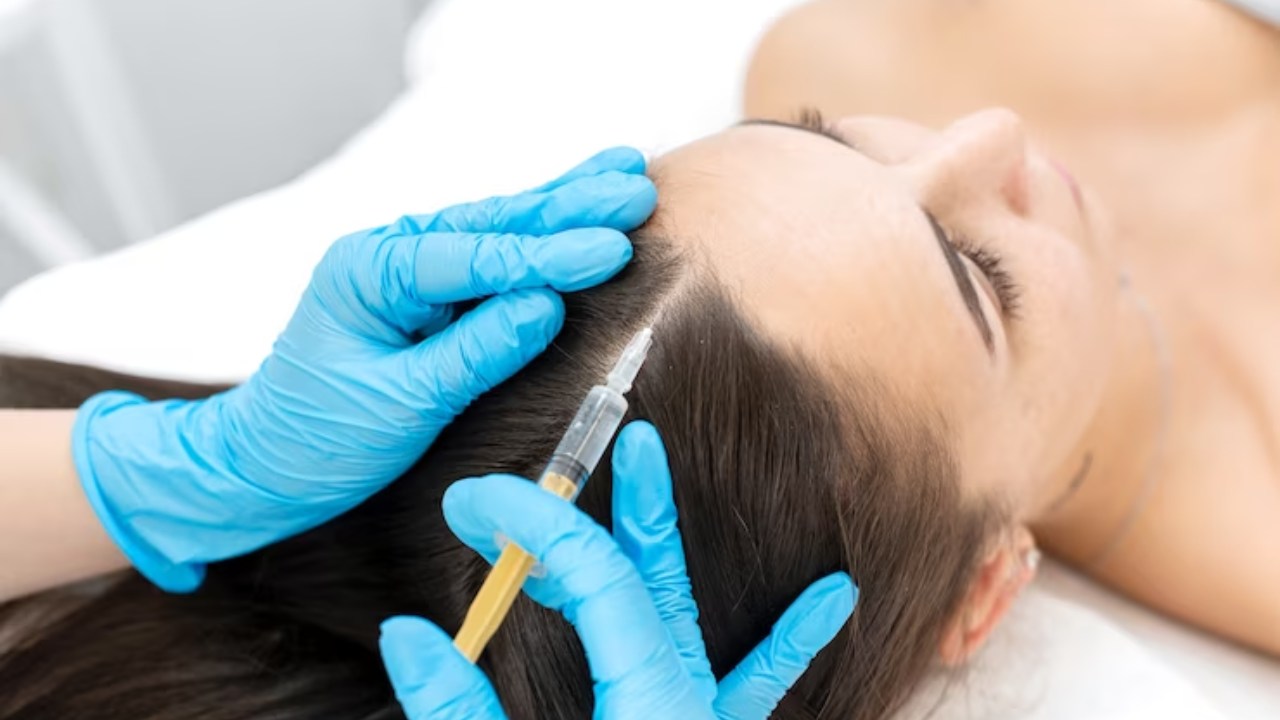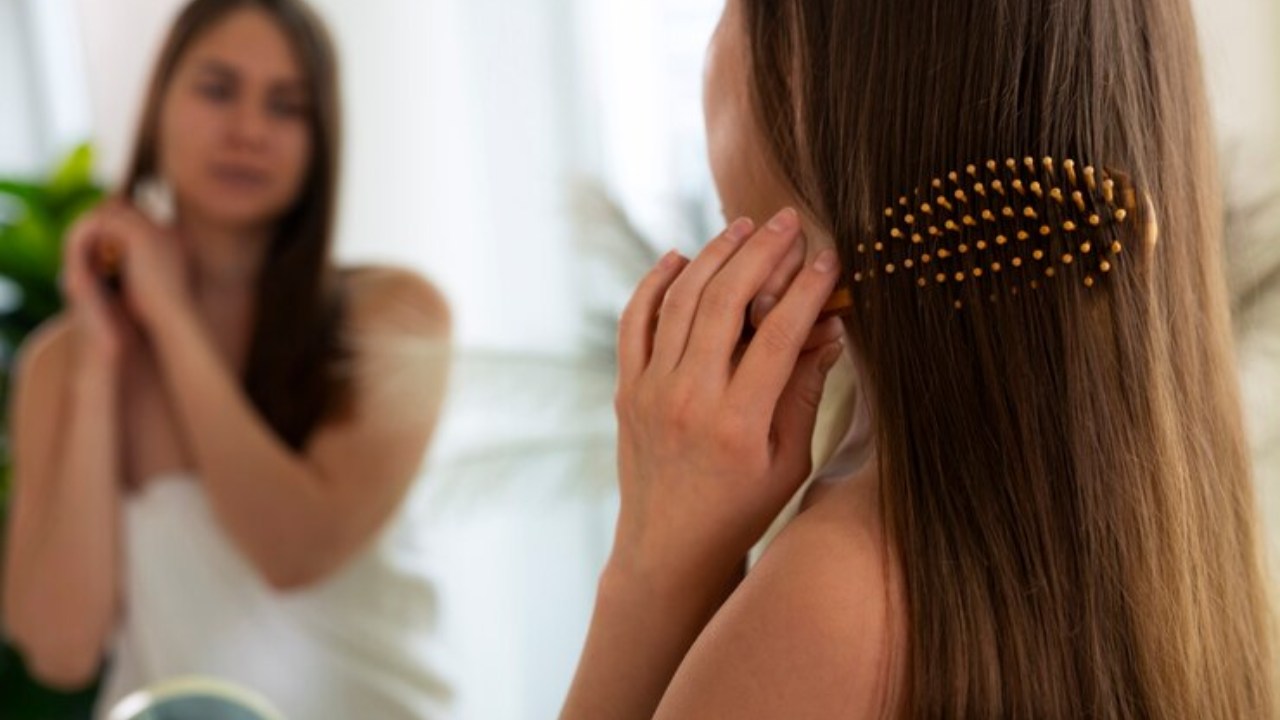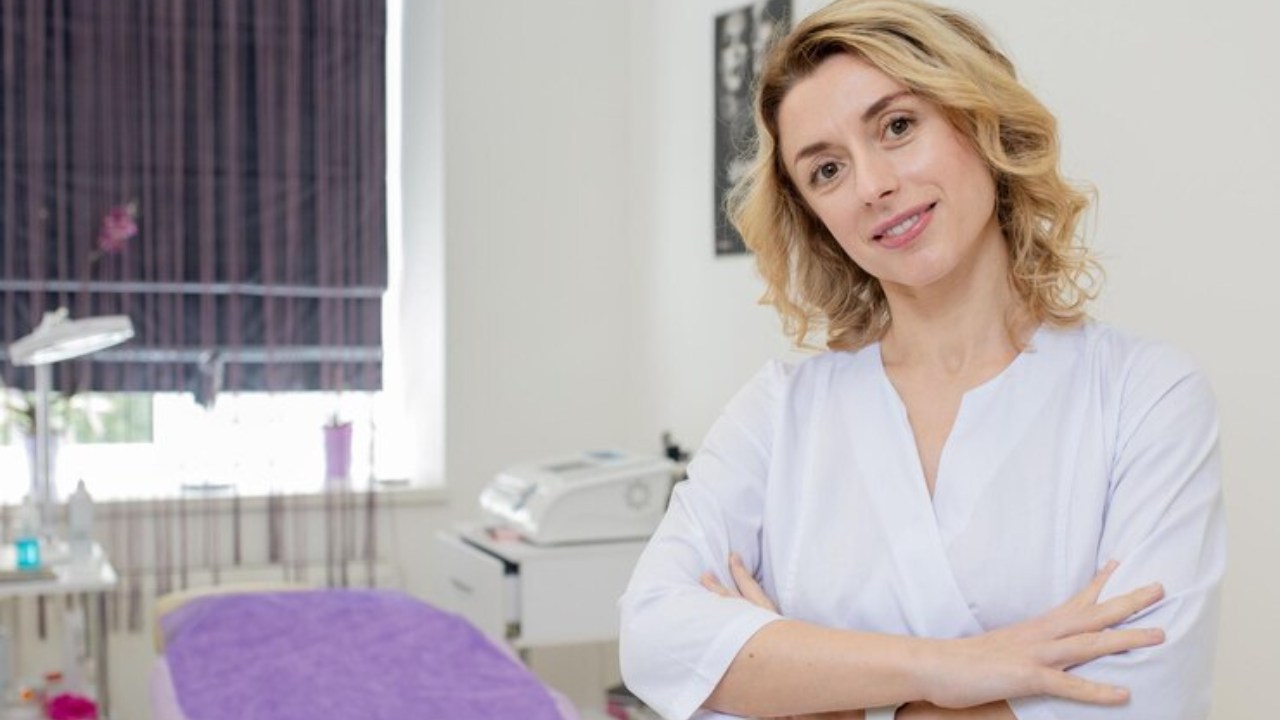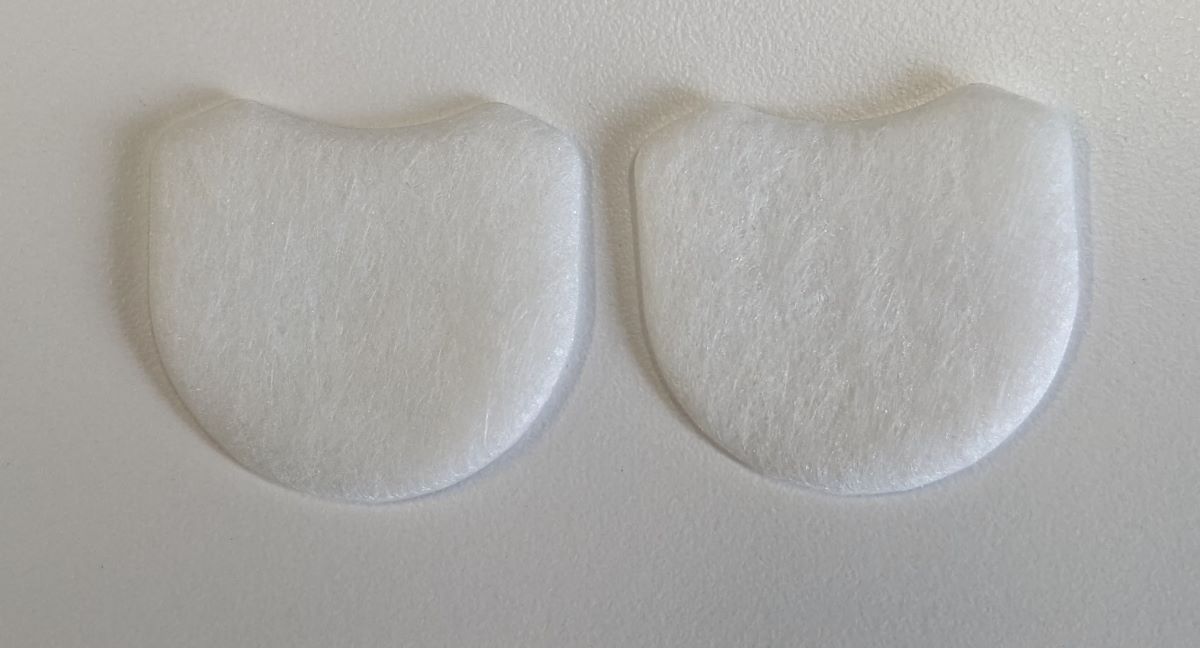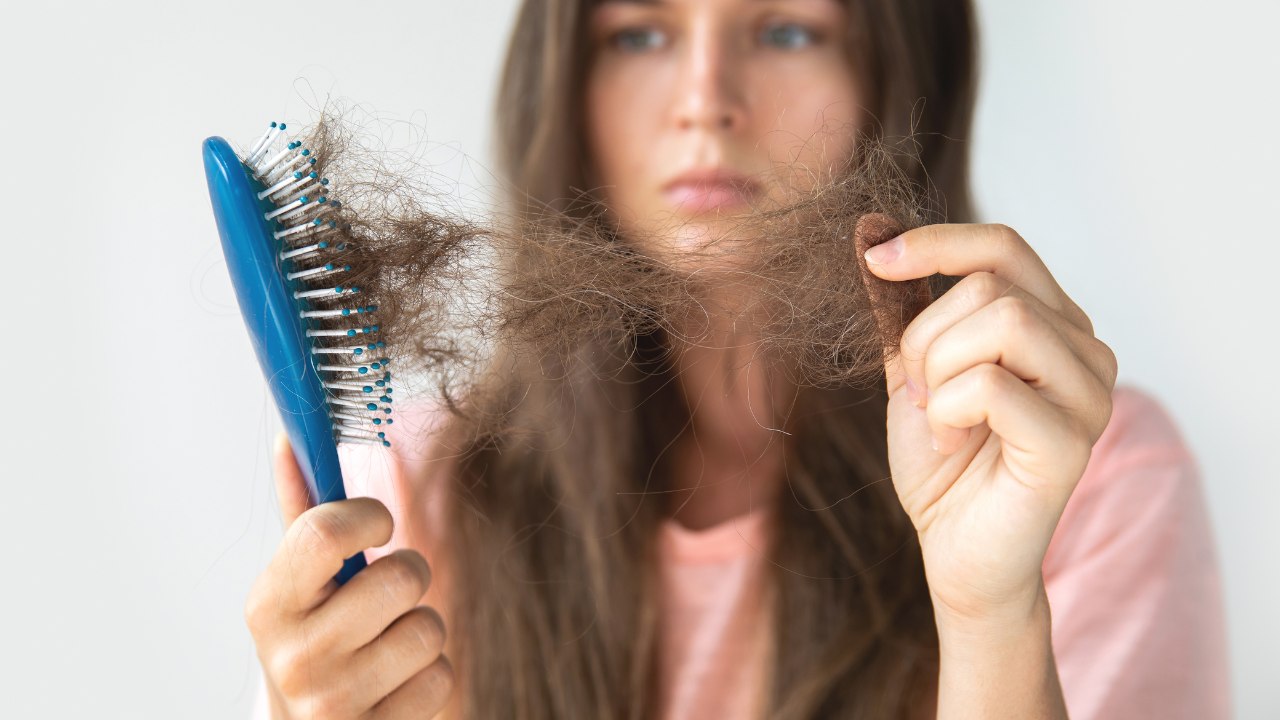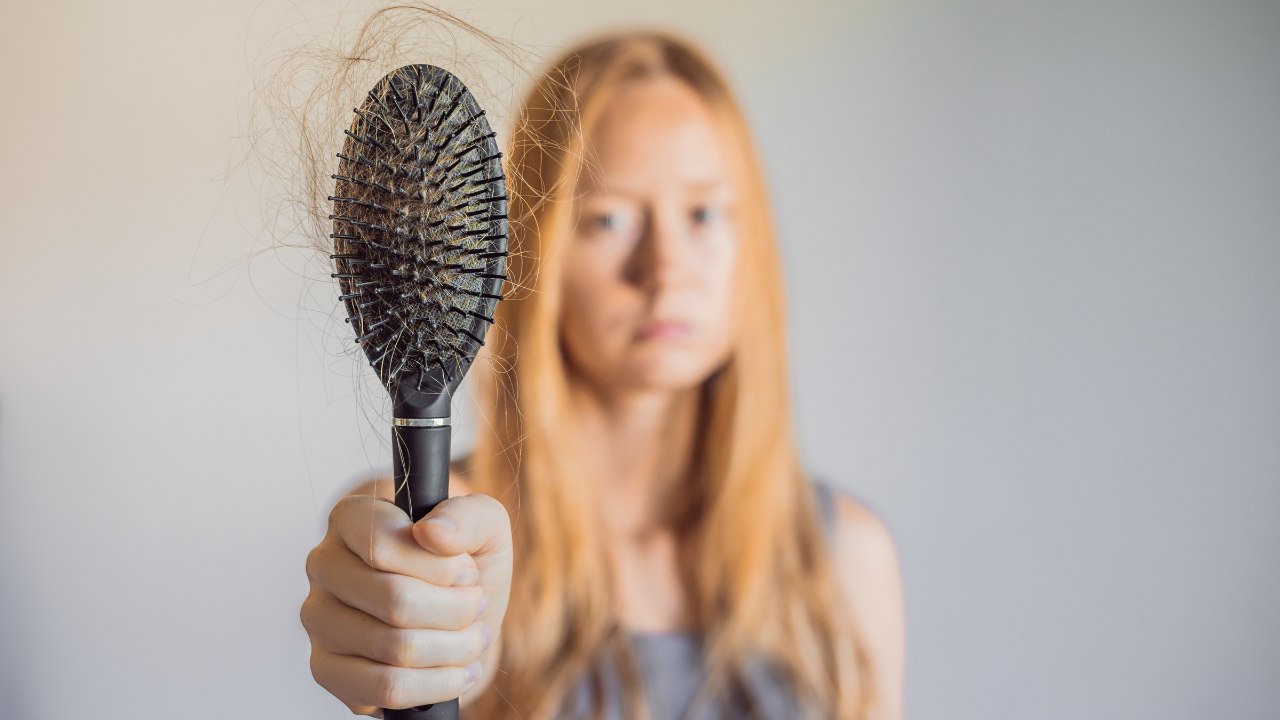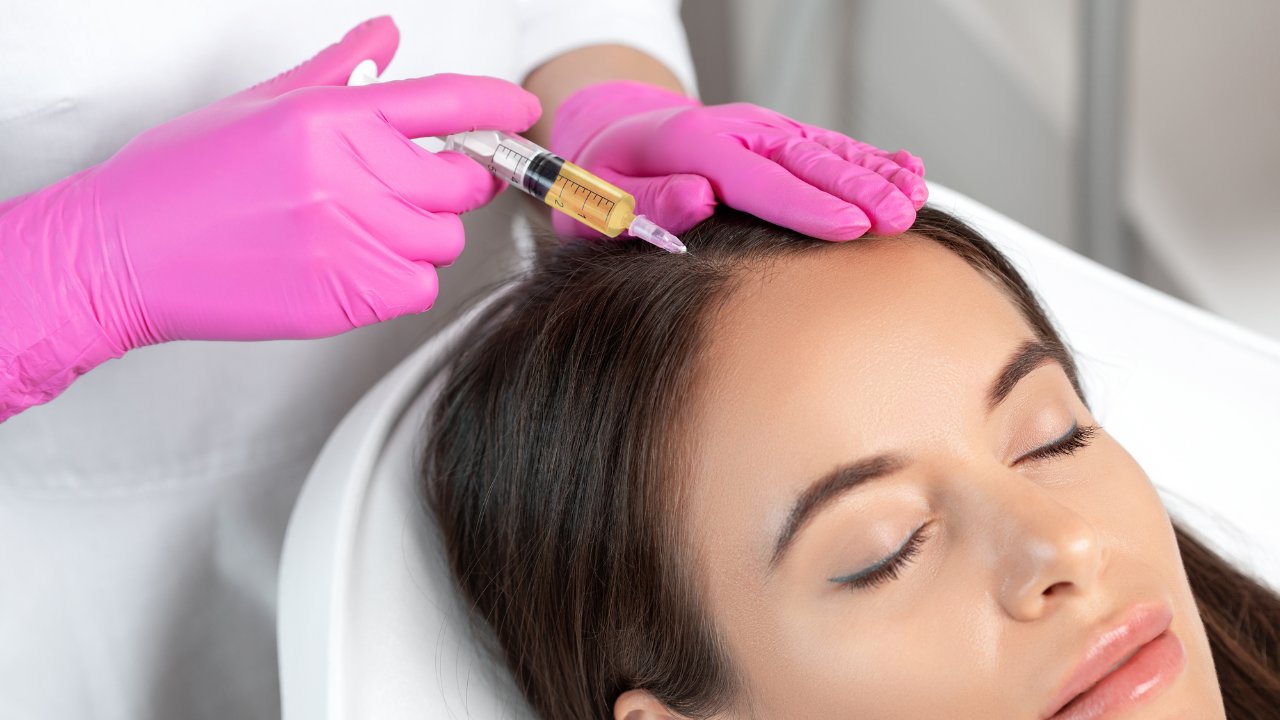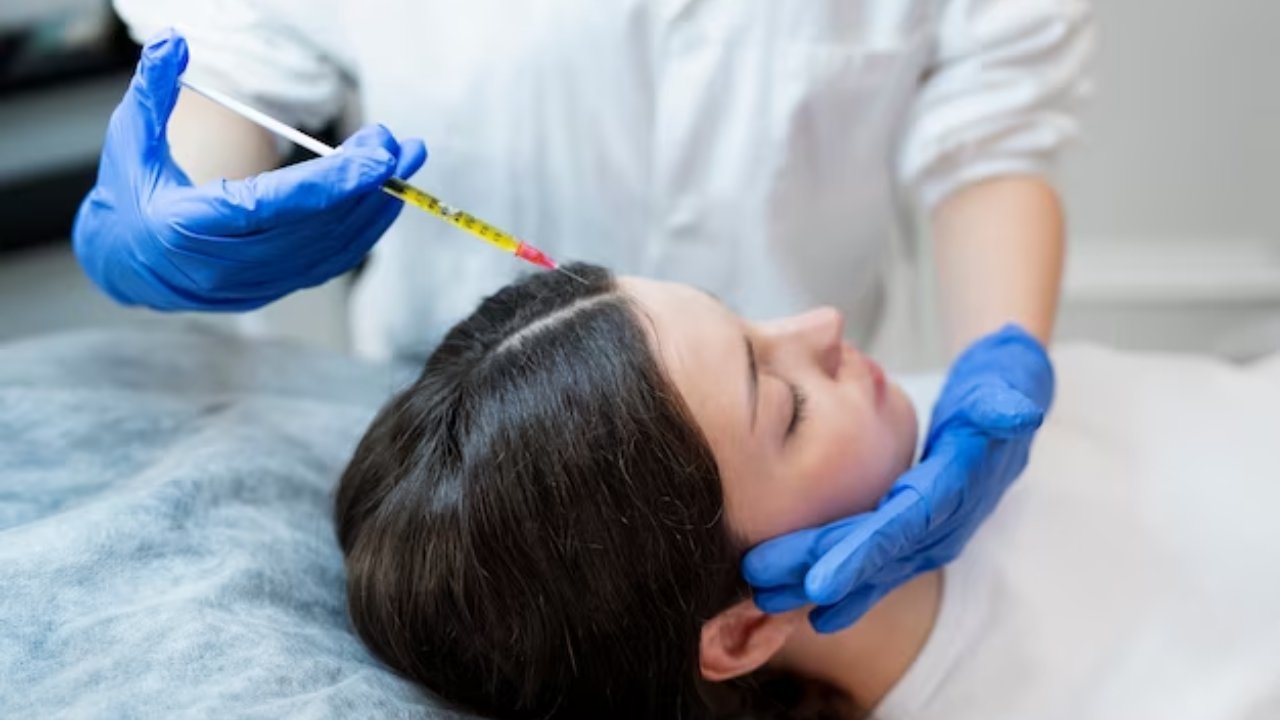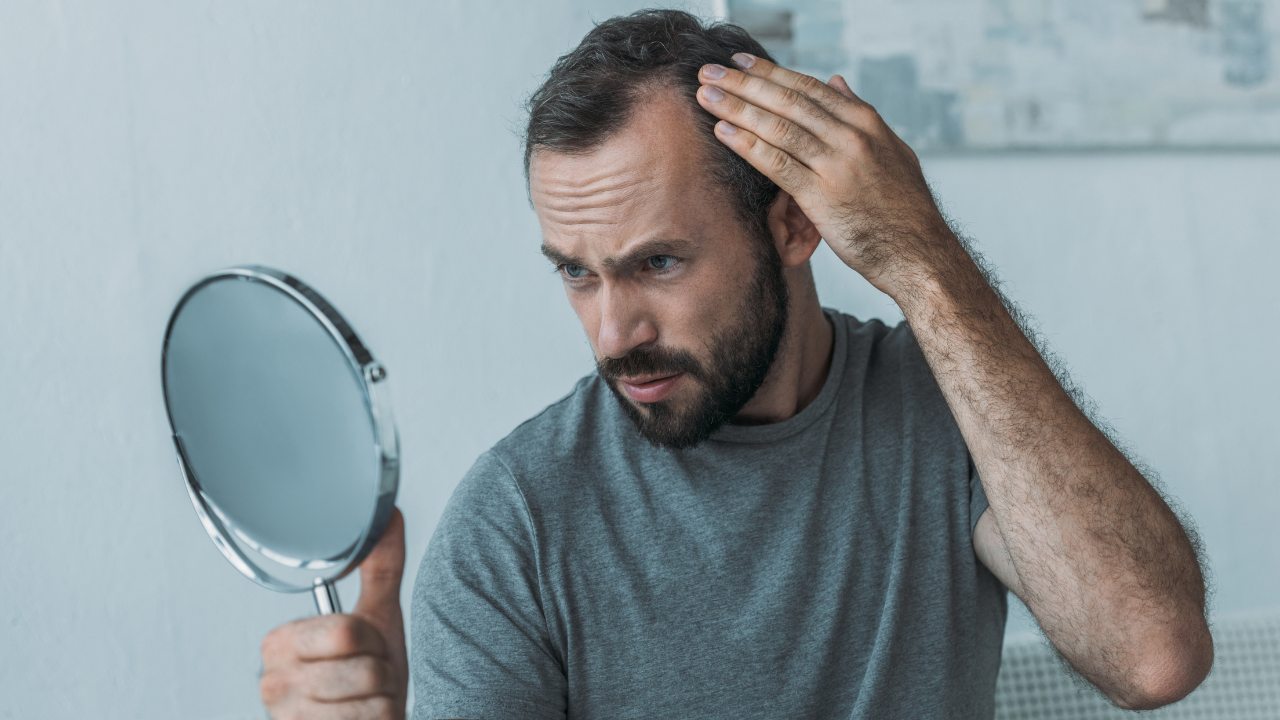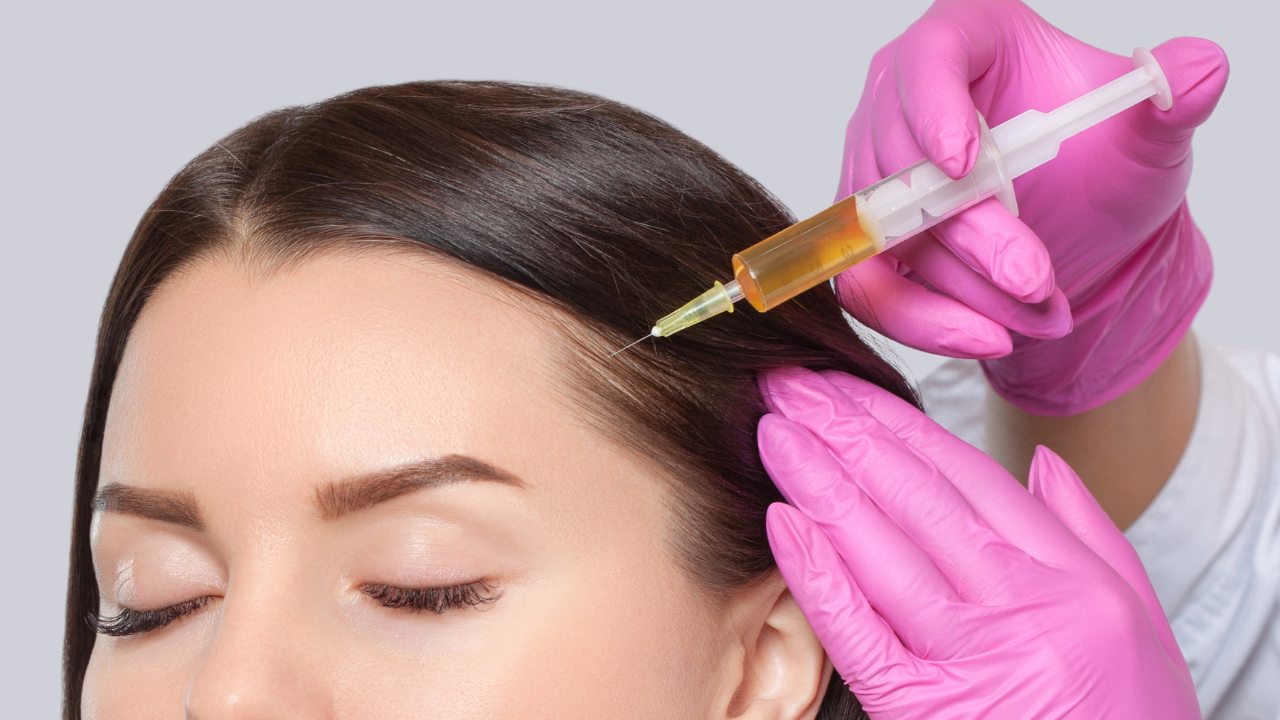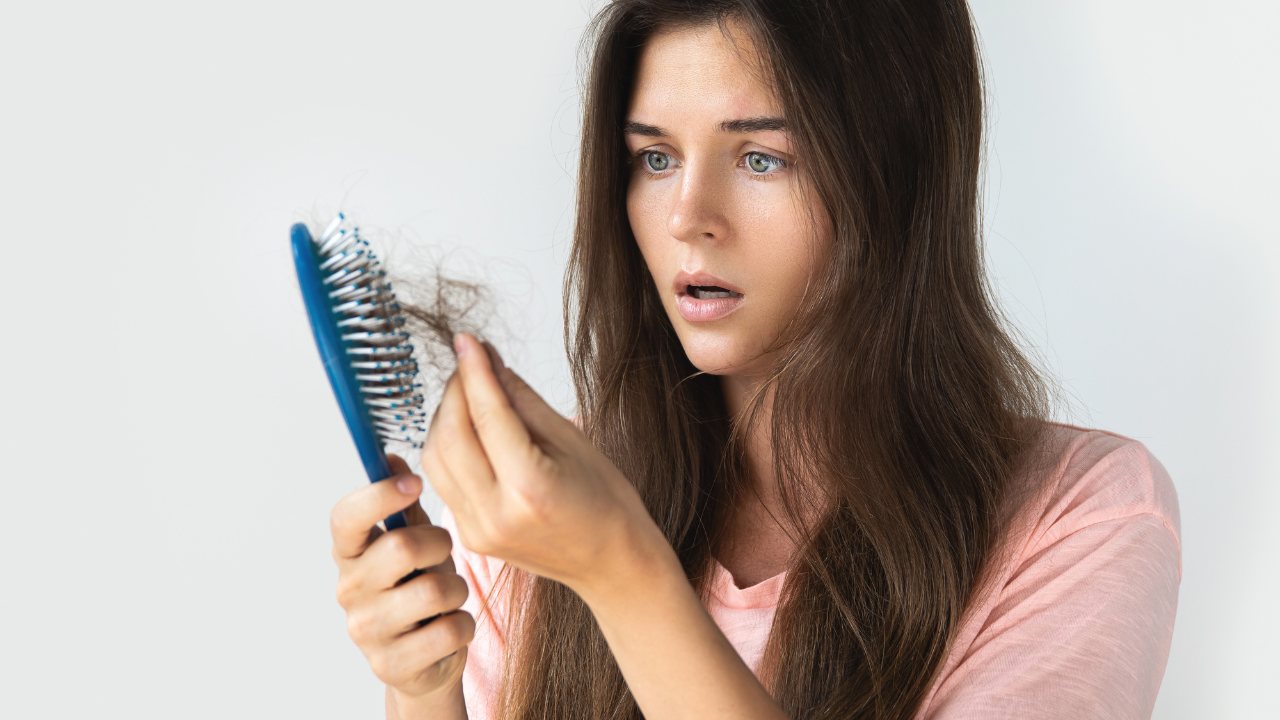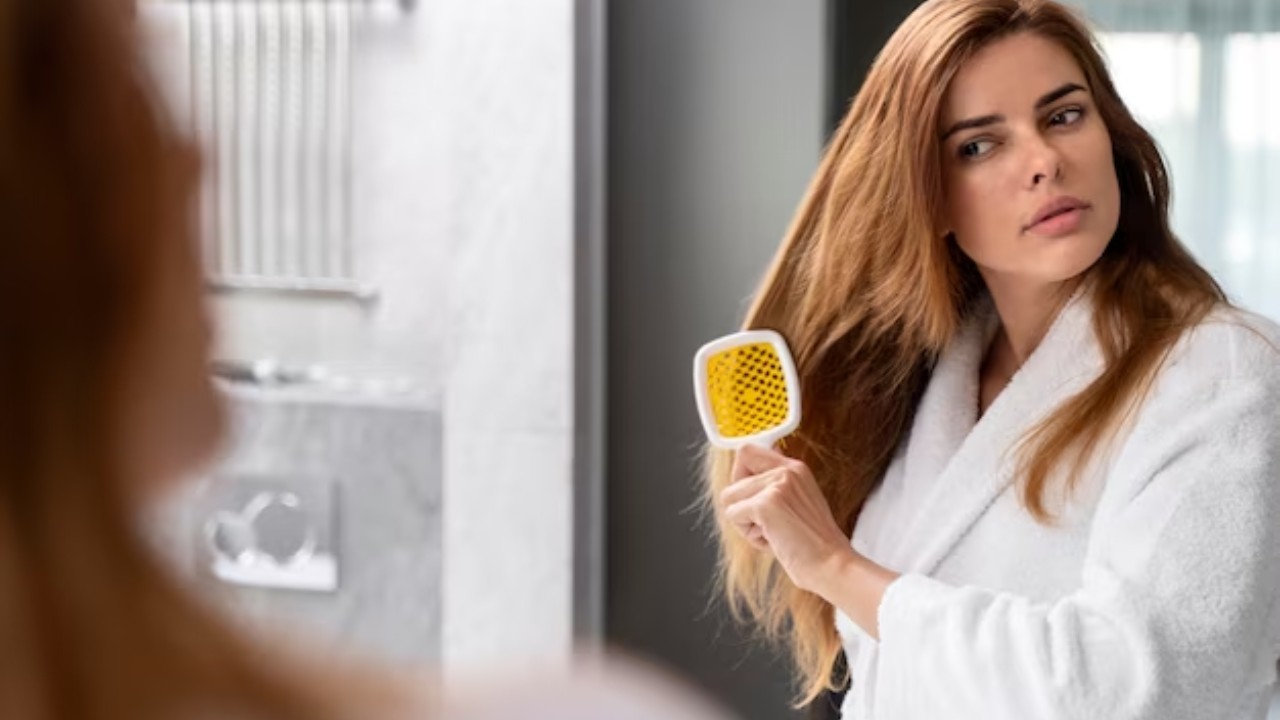Facing hair loss can be challenging, sparking a quest for effective solutions. Alopecia, with its various forms, leaves many seeking answers.
Enter PRP therapy, a standout in the realm of treatments offering a glimmer of hope. This method leverages your body’s healing powers and tailors to your unique condition, promising a blanket solution and a personalized approach to hair restoration.
In this blog, we dive into why PRP could be the answer you’ve been searching for in your battle while asking what is the best treatment for alopecia.
Let’s explore how this innovative treatment changes lives, one scalp at a time.
Understanding Alopecia
Alopecia, commonly known as hair loss, can manifest in various forms, significantly impacting those it affects. Among its types, alopecia areata and androgenetic alopecia are notably prevalent, presenting unique challenges and causes.
However, does alopecia go away on its own, or do you need treatments?
Types of Alopecia
- Alopecia Areata: This autoimmune condition leads the body’s immune system to attack healthy hair follicles, resulting in sudden hair loss in patches. It can affect the scalp, face, and sometimes other body parts. The exact cause remains unclear, but genetics and environmental factors are believed to contribute to its onset. The unpredictable nature of this condition—where hair can regrow and then fall out again—often adds an emotional strain on individuals.
- Androgenetic Alopecia, also known as male or female pattern baldness, is characterized by gradual hair thinning. It can lead to complete baldness in men or significant hair thinning in women. Genetics and hormonal changes primarily drive it, making it a common but challenging condition to manage.
The Impact of Hair Loss
The psychological and social implications of alopecia cannot be overstated. Hair is often seen as a significant aspect of personal identity and aesthetics, making hair loss a distressing experience for many. Individuals with alopecia may suffer from lowered self-esteem, anxiety, and depression due to their changing appearance.
The condition’s visibility can lead to social withdrawal and impact personal and professional relationships, emphasizing the critical need for effective treatments that address hair regrowth and support individuals’ psychological well-being.
Exploring Alopecia Treatments
The journey to find the most effective treatment for alopecia varies significantly among individuals, encompassing a range from conventional medications to surgical interventions and even natural remedies.
Each treatment option has its mechanism of action, potential benefits, and considerations.
Conventional Treatments
- Topical Minoxidil: Widely recognized as an over-the-counter solution for both men and women, minoxidil is applied directly to the scalp. It works by prolonging the growth phase of hair follicles, potentially leading to thicker, longer hair over time. Its exact mechanism isn’t fully understood but is believed to involve widening blood vessels in the scalp, improving follicle function.
- Oral Finasteride: Specifically for androgenetic alopecia in men, finasteride is an oral medication that inhibits the production of dihydrotestosterone (DHT), a hormone known to shrink hair follicles. By reducing DHT levels, finasteride can slow hair loss and even promote regrowth in some cases. Women are typically advised against using finasteride due to potential side effects, especially during pregnancy.
- Corticosteroids for Alopecia Areata: Corticosteroids, administered either topically, as injections, or orally, are used to suppress the immune system, aiming to stop it from attacking hair follicles. While effective for some in managing alopecia areata, results vary, and long-term use can come with significant side effects.
Surgical Options
Hair Transplant Surgery is a more permanent solution for androgenetic alopecia. It involves transplanting hair from denser areas of the scalp—or other parts of the body—to balding or thinning areas.
Though invasive, this process can offer dramatic improvements in appearance. Considerations include the cost, the need for potentially multiple sessions, and a recovery period during which patients may experience discomfort.
Natural and Alternative Treatments
The allure of natural remedies and supplements for alopecia treatment—ranging from essential oils like rosemary and peppermint to vitamins and minerals—is vital for those seeking non-chemical, holistic options.
While anecdotal evidence suggests some individuals may benefit from these treatments, scientific consensus on their effectiveness must be improved.
Research in this area is ongoing. While natural treatments can be part of a broader hair care regimen, they should not replace consultations with healthcare professionals.
The Role of PRP Therapy in Treating Alopecia
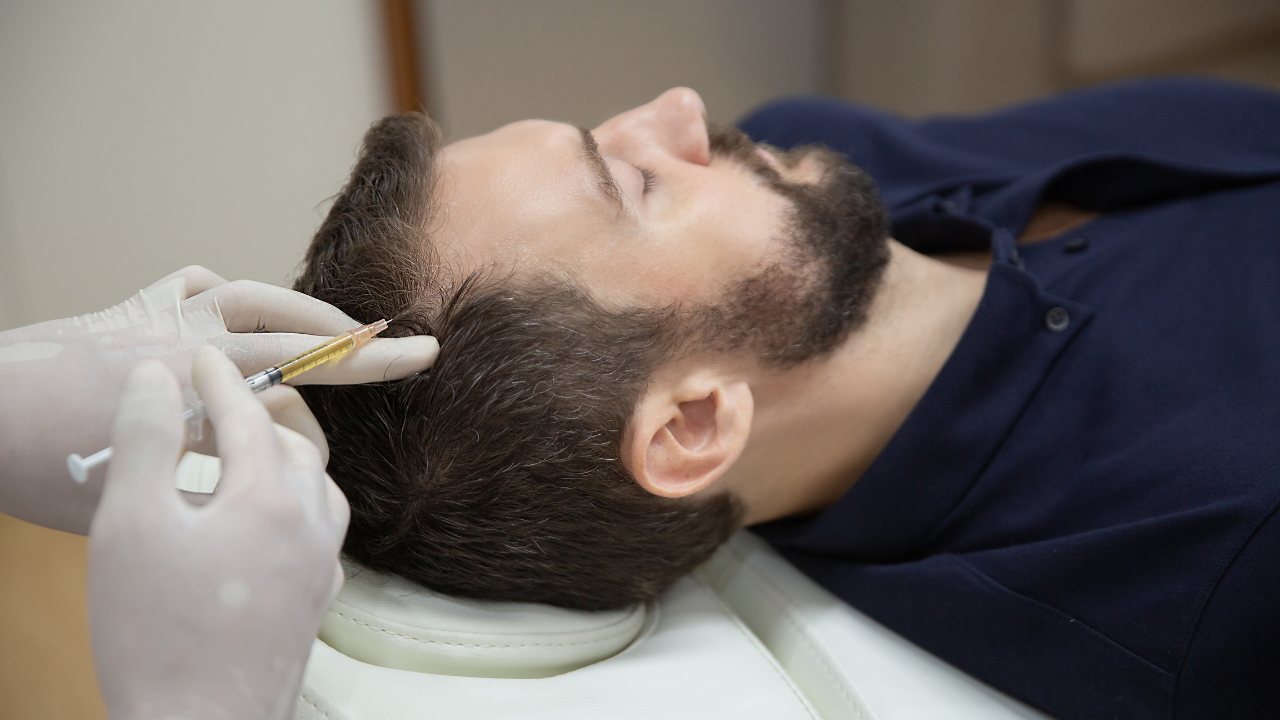
Platelet-rich plasma (PRP) therapy has emerged as a promising solution for individuals battling alopecia. It offers hope through a process that leverages the body’s healing mechanisms. We will look at what PRP therapy entails, how it functions at the cellular level, and its efficacy in treating different types of alopecia.
Introduction to PRP Therapy
PRP therapy involves extracting a small amount of the patient’s blood and processing it to concentrate the platelets, pivotal in wound healing and tissue regeneration. This concentrated platelet-rich plasma is then injected into the scalp where hair loss has occurred.
The preparation process involves centrifuging the blood to separate its components, allowing for plasma extraction with a high concentration of platelets.
This minimally invasive procedure is typically done in a clinic setting and requires no significant downtime, making it an appealing option for many.
Mechanism of Action
Its natural basis and mechanism of action are at the heart of PRP therapy’s effectiveness. Platelets are rich in growth factors that play a crucial role in tissue healing and regeneration. When injected into the scalp, these growth factors stimulate the hair follicles, encouraging them to shift from dormant to active growth.
This process involves promoting angiogenesis (forming new blood vessels), enhancing nutrient supply to the follicles, and stimulating cellular proliferation and differentiation. Essentially, PRP therapy creates a more favorable environment for hair growth and revitalization at the cellular level.
Effectiveness in Alopecia Areata
Alopecia areata, characterized by patchy hair loss, has shown responsiveness to PRP therapy in various studies.
Research indicates that the concentrated growth factors in PRP can effectively target the immune-mediated damage to hair follicles typical of alopecia areata. Studies have documented patients experiencing significant hair regrowth and a reduction in bald patches following PRP treatments.
For instance, a study published in the “Journal of Dermatological Treatment” found that PRP therapy led to hair regrowth in alopecia areata patients, with improvements sustained over follow-up periods.
Effectiveness in Androgenetic Alopecia
Similarly, PRP therapy has proven beneficial for patients with androgenetic alopecia (male and female pattern baldness), marked by thinning hair and a receding hairline. The growth factors in PRP are believed to counteract the follicular miniaturization process characteristic of androgenetic alopecia.
Clinical trials and patient reports have highlighted the efficacy of PRP in increasing hair density and thickness. A systematic review in the “Journal of Cosmetic Dermatology” concluded that PRP injections improved hair density without significant adverse effects, making it a viable treatment option for androgenetic alopecia.
Comparing PRP to Other Treatments
When exploring options for alopecia treatment, weighing the effectiveness, side effects, and patient satisfaction associated with each method is essential.
Platelet-Rich Plasma (PRP) therapy is a relatively new field that has garnered attention for its promising results. Here’s how PRP compares to traditional and surgical treatments for hair loss.
Efficacy Comparison
- PRP vs. Conventional Treatments: Conventional treatments for alopecia, such as minoxidil and finasteride, have been staples for years. Minoxidil, a topical solution, and finasteride, an oral medication, both have proven efficacy in stimulating hair growth and preventing further hair loss. However, their results can be variable and often require ongoing use to maintain benefits. In contrast, studies on PRP therapy show it promotes hair growth and improves hair quality and density. A study published in the Journal of Cosmetic Dermatology highlighted that participants receiving PRP treatment experienced significant increases in hair count and thickness compared to those using conventional treatments, suggesting PRP’s superior efficacy in certain cases.
- PRP vs. Surgical Options: Hair transplant surgery is a more permanent solution for hair loss, particularly effective in cases of androgenetic alopecia. While hair transplants offer transformative results, they come with higher costs, longer recovery times, and the potential for surgical complications. PRP therapy, on the other hand, is less invasive, with studies indicating it can enhance the success of hair transplants by improving graft survival and promoting faster healing. Thus, PRP can be seen as both an adjunct to
surgical options and a standalone treatment offering substantial benefits with fewer risks.
PRP vs Stem Cell therapy: Do they really work?
Side Effects and Safety
One of the most compelling advantages of PRP therapy over other hair loss treatments is its safety profile. Because it is derived from the patient’s blood, PRP significantly reduces the risk of allergic reactions, infections, or severe side effects.
Conventional medications like finasteride have been associated with potential side effects, including sexual dysfunction and depression.
Similarly, surgical interventions carry risks of infection, scarring, and anesthesia complications. In contrast, PRP’s autologous nature makes it remarkably safe. Most patients experience only mild discomfort or bruising at the injection site, which typically resolves quickly.
Patient Satisfaction
Patient testimonials and satisfaction surveys consistently highlight the positive impact of PRP therapy on individuals’ alopecia treatment journeys. Many patients express high satisfaction with PRP, citing hair density, thickness, and overall scalp health improvements.
Clinical research supports these personal accounts; a survey conducted among patients who underwent PRP therapy for androgenetic alopecia revealed high satisfaction rates, with participants noting not only the aesthetic improvements but also the boost in self-confidence and quality of life post-treatment.
Conclusion
As we’ve explored the journey of finding an effective solution for alopecia, PRP therapy stands out. It offers a path to regeneration and confidence. Tailored to meet individual needs, it’s more than just a treatment; it’s a new beginning for hair.
PRP Therapy Clinic LA, led by the skilled Dr. David Nazarian, is your destination for those in LA seeking the forefront of care. Embrace the opportunity to transform your hair loss story into renewal and growth.
Discover the best in PRP treatments and enter a future with fuller, healthier hair at PRP Therapy Clinic LA.

